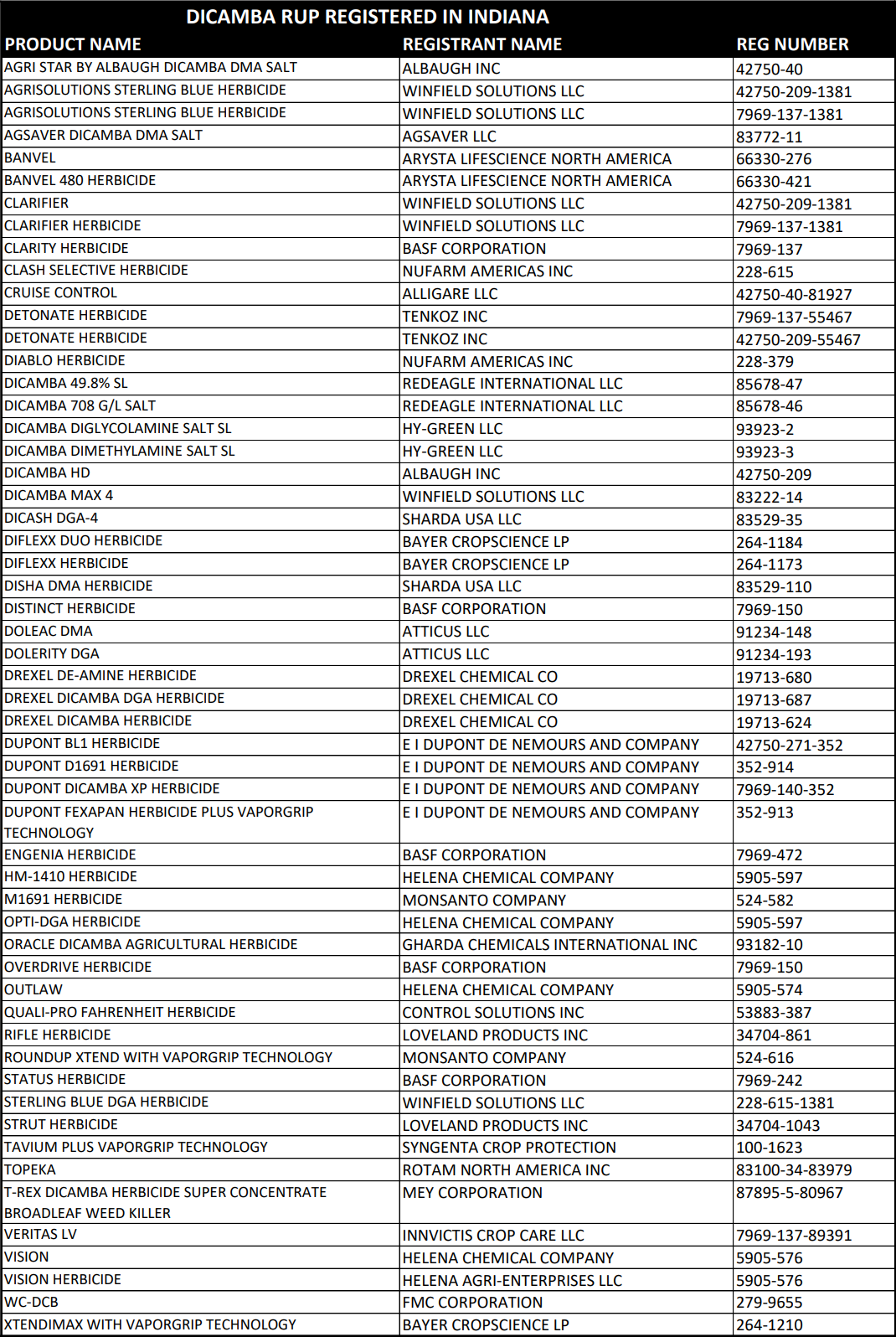Planting season is at full swing and postemergence (POST) herbicide application season will be here soon with the recent rains we have received. For those that planted Xtend or Xtendflex soybeans or use dicamba postemergence in corn or grass pastures, we would like to remind those users of the dicamba application restrictions for Indiana.
On March 2, 2021, the Indiana Pesticide Review Board (IPRB) classified all Restricted Use Pesticides (RUP) containing at least 6.5% dicamba as Highly Volatile Herbicides (HVH). A HVH is any herbicide capable of emitting vapors that can move off-target and cause injury to non-target vegetation. This decision allowed the Office of Indiana State Chemist (OISC) to establish a no-spray application period from June 21st through August 31st for all dicamba HVHs. During the no-spray period, NONE of the dicamba HVHs can be applied, regardless of the target crop or site to which it is applied. Therefore, this decision also affects a few POST corn herbicides that contain dicamba and herbicides used in grass pastures as well. A list of all dicamba RUPs in Indiana that are impacted by this restriction is shown in table 1. For more information regarding dicamba’s classification as a HVH, access www.oisc.purdue.edu/pesticide/pdf/hvh_faq.pdf.
There are several states that have additional application restrictions in place for dicamba, above and beyond the June 30th cutoff date on the federal label. So, Indiana is not alone in having restrictions in place to reduce incidences of off-target movement. Since last summer, we have been advising our clientele that weed control plans that do not include the use of dicamba after June 20th should be in place for this season based on the success in reducing the number of off-target movement claims submitted to OISC. The development of herbicide-resistance to dicamba in combination to off-target movement concerns reinforces the importance of using an Integrated Weed Management (IWM) approach that does not solely rely on one active ingredient to control weeds like marestail, giant ragweed, waterhemp, and Palmer amaranth that are resistant to multiple herbicides sites of action. Strategies such as applying multiple effective herbicide modes of action (MOA); full rates of preemergence (PRE) herbicides at planting; layered residuals; cover crops; and inter-row cultivation are some of the alternatives for reducing the reliance on POST emergence herbicides such as dicamba.



